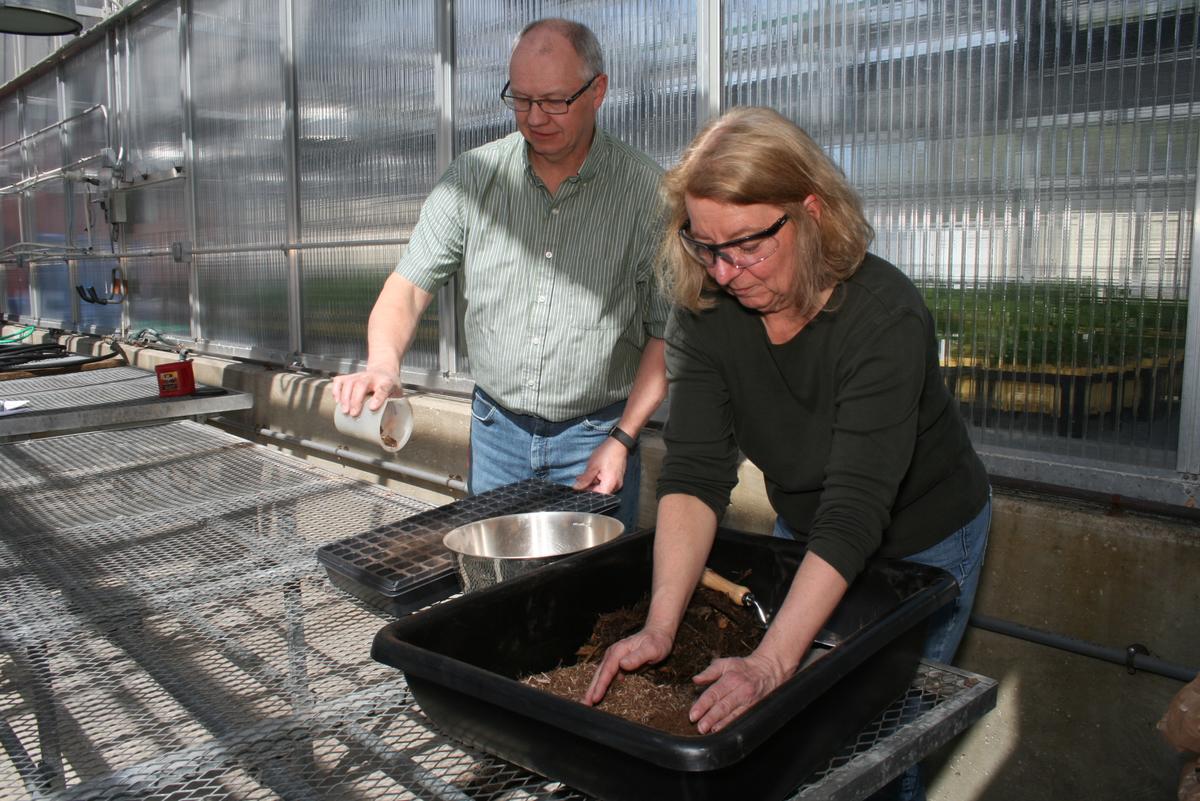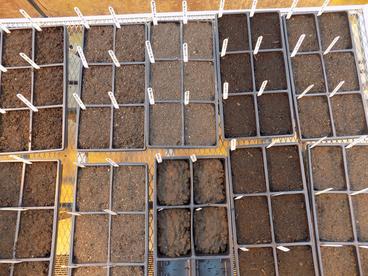In northeast Minnesota where the bedrock is near the surface, soils are a valuable commodity. The Minnesota Department of Transportation, for instance, needs soils with specific drainage properties for their road building efforts. A mineland reclamation project needs soils with high nutrient content.
“But why would you take top soil from one area, to put it on another area?” asked Marsha Patelke. “That’s disturbing the environment.”
Patelke is a NRRI researcher trying to figure out how to make a variety of soils for a variety of purposes out of local waste resources. Her current goal is to document the availability of resources and compile it into an online catalog. And that could lead to a lot of opportunities.
NRRI has done extensive research on readily available materials such as dredged sediment from the shipping canal. Patelke also knows there is a lot of mining waste rock, as well as sawdust and tree bark from wood products manufacturing in our region. But she suspects there are many useful regional by-products that she doesn’t know about.
For example, during a conversation with staff at the Western Lake Superior Sanitary District, Patelke learned that they get a lot of sand in their system this time of year. “I never would have thought of that,” she said.So her first goal is to reach out to local industries to gather data on their by-products and waste materials. Then she and her team members will start to characterize the physical, chemical and nutrient make-up of the materials. NRRI Peat Scientist Kurt Johnson is conducting greenhouse studies to determine plant growth potential. NRRI Scientist Meijun Cai is doing chemical analyses and leachate studies replicating rainwater to understand what chemicals leach out. David Saftner, a professor in UMD’s Dept. Of Civil Engineering, and students are studying the engineering properties of the soils -- the grain size distribution and texture.
Once they understand the “ingredients” available, the team can develop recipes for soils designed for specific purposes.
When peatlands are disturbed for road building, the removed peat could be stockpiled and added to the NRRI database as an ingredient for a unique soil mixture with filtering properties. Nutrients in animal manure could be useful in a topsoil application.
Patelke thinks her database could lead to interesting commercialization prospects. But first she needs to tap into NRRI’s broad stakeholder network to get waste resources information from local industries and agencies.
“When I explain this project to people, they get really excited and jump ahead to how to do this on a large commercial scale,” she added. “But right now I’m just focused on getting all the information cataloged. We’ll go from there to deliver some exciting opportunities for Minnesota.”

